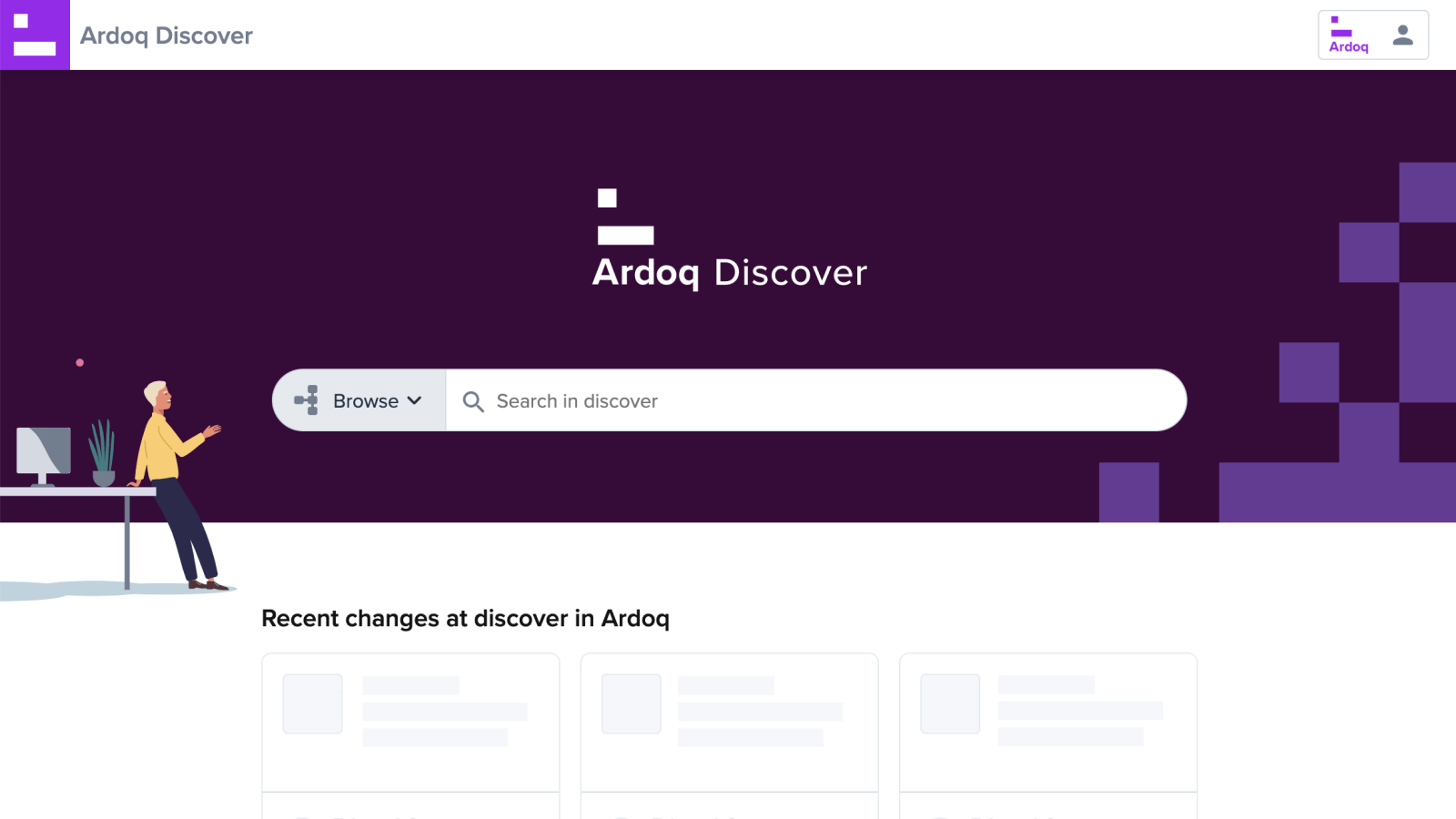Online banking isn’t new. However, with the closure of many physical banking branches, and more time than ever spent online throughout the pandemic, large financial institutions have been forced to speed up how they do business online. Such change has put digital transformation in the financial services industry center stage.
As McKinsey reported in how COVID-19 has pushed companies over the technology tipping point, the rate of digitization that would usually happen in three to four years occurred in just a few months. Couple this with the emergence of financial technology (fintech), and it quickly became clear that if traditional financial services providers were to keep up, embracing digital change was non-negotiable.
Fintech companies are digital-native. They’re free from the layers of legacy technology and systems that weigh down traditional banking institutions. As a result, fintech providers can pivot according to shifting consumer trends. These digital-only services also have fewer overheads and can invest more in improving their online customer experience. Such factors mean that traditional banks have no option but to modernize.
Nurturing Customer Experience Excellence in Financial Services
The banking sector is unique in how it interacts with its customers. Unlike a physical product, a bank and its customer connections are ongoing. The relationship has the potential to last many years. A 2021 survey commissioned by Bankrate and YouGov found that the average adult in the US sticks with the same banking account for 17 years. Furthermore, many of us interact with our banks at least weekly, if not daily.
It’s a VUCA World: Challenges and Threats to Financial Services
Big legacy banks need to contend with the so-called “VUCA” world. VUCA stands for volatility, uncertainty, complexity, and ambiguity. Challenges posed by events like global pandemics are impossible to predict. While those factors are outside the control of financial services companies, how they interact with their customers is something they can control.
Threats from external forces prove that traditional banking providers need to be agile and open in their business model. Adopting a more transparent and flexible model can also benefit how banks work with their customers. However, digital transformation of financial services can be difficult to implement due to the large size and complexity of many companies within the sector.
Many older providers rely on core systems and applications that haven’t been updated or optimized to take advantage of new technologies or application management approaches. New EA means Enterprise Architecture teams can help traditional banking providers to take the first steps toward digital transformation. These new EA approaches can support even the largest enterprises to operate with agility by using data-driven insights to make decisions. Automation can also be used to improve communication and engagement across the business.

Enterprise Architecture to the Rescue: Adopting a Customer-Centric Approach
While we can’t see into the future, one area that organizations can take control of is their customer experience journey. More consumers are accessing their financial services online than ever before. US banking giant JPMorgan Chase’s 2021 Digital Banking Attitudes Study found that four in five consumers now prefer to access their banking services digitally. This shift represents a huge opportunity for legacy banks to stand out from the competition by delivering excellence in customer experience.
EAs implementing new EA approaches can support this. For example, by using Business Capability Modeling (BCM), financial organizations can gain the necessary insights to make the changes required to meet their customers’ demands better. BCM connects people and processes, allowing a large organization to take stock of where they are, where they need to be, and how they will get there.
Using EA to Help Meet Financial Services Customers’ Expectations
Consumers can be fickle. Trends move in and out of fashion, and, as already mentioned, it’s hard to predict what’s around the corner. However, it is beyond doubt that online banking is here to stay. We take it for granted that we can access our banking and finance-related needs, such as transferring savings, buying insurance, or applying for a loan via our smartphones. We expect things to happen in real-time, including opening a chat with a named, real-life advisor. Digital-native fintech providers can meet these expectations and shift their offerings according to changing consumer preferences.
Traditional banks must therefore embrace digital change if they are to hold on to their customers. They need to foster their customer relationships digitally rather than through face-to-face connections. Big banks must connect their business and IT departments better to improve their digital offering.
Digital transformation of financial services is more likely to be successful with strong collaboration between departments. Enterprise Architects (EAs) can support here, too. Democratizing information helps break down information silos in large organizations, meaning customer pain points, for example, can be more easily worked through together. Improved access to data and information also makes for faster and more-informed decision-making.
Improved communication and relationships across organizations are also important for ensuring that colleagues feel comfortable in raising concerns as they arise. If teams feel listened to, they are more likely to speak up and voice opinions, thus helping to flag potential problems that might de-rail a digital transformation project.
New EA tools can also help EAs reposition, resolve, and recreate the customer experience by creating a DTO (digital twin of the organization). This process can help to assess the customer journey, identify pain points, provide useful pointers on future consumer behaviors, and locate areas for improvement.
New Enterprise Architecture to Enable Adjustments in Company Culture
Collaboration and engagement across the organization are critical for successful digital transformation in financial services. Teams aligned on objectives are far more likely to deliver success. Platforms like Ardoq can help to address differences in an organization by helping to connect the right people to the relevant process when it matters most, nurturing a shift from a static to a more flexible culture.
Automation that can notify people of outages or changes, such as a feature like Ardoq Broadcasts, helps ensure messaging is consistent across a large organization. Crowdsourcing information through features like Surveys means that data can be maintained and swiftly updated. A company’s end-to-end digitalization helps to build the right foundations to enable new customer-centric business models while helping to align departments when launching new products and services.
Creating the right environment for better collaboration and engagement helps financial services companies build the right platform to focus on Customer Experience Excellence (CEE).
Digital Transformation of Financial Services to Deliver Continuous Customer Experience Excellence
An internal culture change is also critical for long-term digital transformation success. Digital transformation to support CEE isn’t a one-off process. It’s important to realize that supporting CEE is ongoing and requires constant evaluation, adjustment, and long-term commitment. Creating awareness of this across the organization is fundamental to retaining buy-in from colleagues. EA can support here too, and make CEE-driven change relevant to all by aligning and prioritizing initiatives to business strategies. Business Capability Realization is one way to help connect how people, processes, information, and IT solutions are all connected to the business in question’s business capabilities. These insights give an architect the tools to spot opportunities for improving customer experience.
It’s important to realize that change can create internal clashes or team friction. Creating the right value-sharing conditions across departments can help to ease the likelihood of issues here. This might include more democratization of data or clearer communication about a shift in business priorities. Financial services will likely experience this as part of a digital transformation program, as the business focus will move away from products and instead zone in on customer relationships. Making sure key decisions surrounding this process are as democratic as possible can help to smooth over conflicts by helping to create a sense of shared ownership and responsibility. This collective engagement can empower teams and foster a common drive to succeed.
Enabling Financial Service Enterprises to Enact Change
All this change in how a bank goes from the stages of “traditional digitalization,” which is about implementing a more digital way of working, to “beyond banking,” where a bank can support customers with non-banking services, needs serious investment. This mostly comes in the shape of new technologies that can support the transformation process, also known as “enablers.” These enablers act across the organization and usually require significant funding outside business-as-usual cost allocations. To get buy-in from the relevant stakeholders, banks and other large financial institutions must show a clear link between the enabler and how it connects to the stakeholders’ desired outcomes. An EA can add true value here by assessing the maturity of the organization’s business capabilities. This assessment can help to show the pathway for successful digital transformation. The EA can then help determine which strategic initiatives the business needs to focus on to reach the desired end state.
Sharing Value: Recognizing the Role of Enterprise Architecture Data in Successful Digital Transformation
Demonstrating continuous progress is important to sustain activity and engagement from colleagues during any digital transformation program. Different measures of success will resonate with different personas or stakeholders across an organization, all of which can be captured and shared using a platform like Ardoq. For example, the CIO might want to understand which applications should be retired or implemented. Maybe they want to know how to reduce the overall IT risk surface. EAs can provide this information, plus the answers to many other potential questions, by following the approaches described in Ardoq’s Best Practice Guides. The data presented needs to be tailored to each stakeholder, which the Enterprise Architect can achieve with Ardoq.
Driving Digital Transformation in the Financial Services Industry
Implementing digital transformation in financial services to adopt a more customer-centric way of working is difficult and requires a long-term commitment to success. It requires a fundamental shift in an organization’s operations, a change in culture, and a big financial investment, which means a willingness to become more open and transparent is necessary. However, for the more traditional banking and financial providers to keep up with the competition, introducing Customer Experience Excellence is a no-brainer.
Enterprise Architects using new EA approaches can help to support these large legacy organizations. EAs can give the right insights to the right people and empower colleagues to make better decisions. Complexities within the industry will always linger. However, new EA methods can help large organizations to think and act like smaller, agile businesses and deliver an excellent customer experience while thriving in the digital era.
Want to learn more about how Enterprise Architecture can drive digital transformation of financial services and deliver customer experience excellence? Download our free, in-depth guide to digital transformation, where we share insights from Senior Enterprise Architect at Ardoq, Klas Sjödahl, who has 20+ years working within the financial sector.
- Customer Stories Using Data-Driven Insights to Innovate and Future-Proof the Enterprise
- Blog Posts How Sicredi Bank Is Using Data-Driven EA
 Ardoq
This article is written by Ardoq as it has multiple contributors, including subject matter experts.
Ardoq
This article is written by Ardoq as it has multiple contributors, including subject matter experts.





/Logos/Ardoq/RGB_Ardoq_Logo_Stacked_White_Monochrome%201.png?width=80&height=77&name=RGB_Ardoq_Logo_Stacked_White_Monochrome%201.png)

